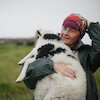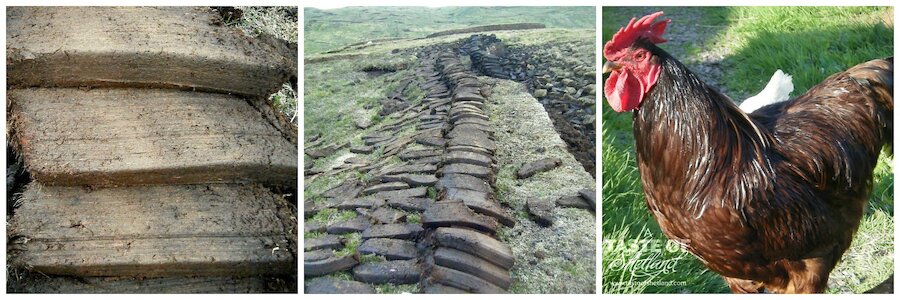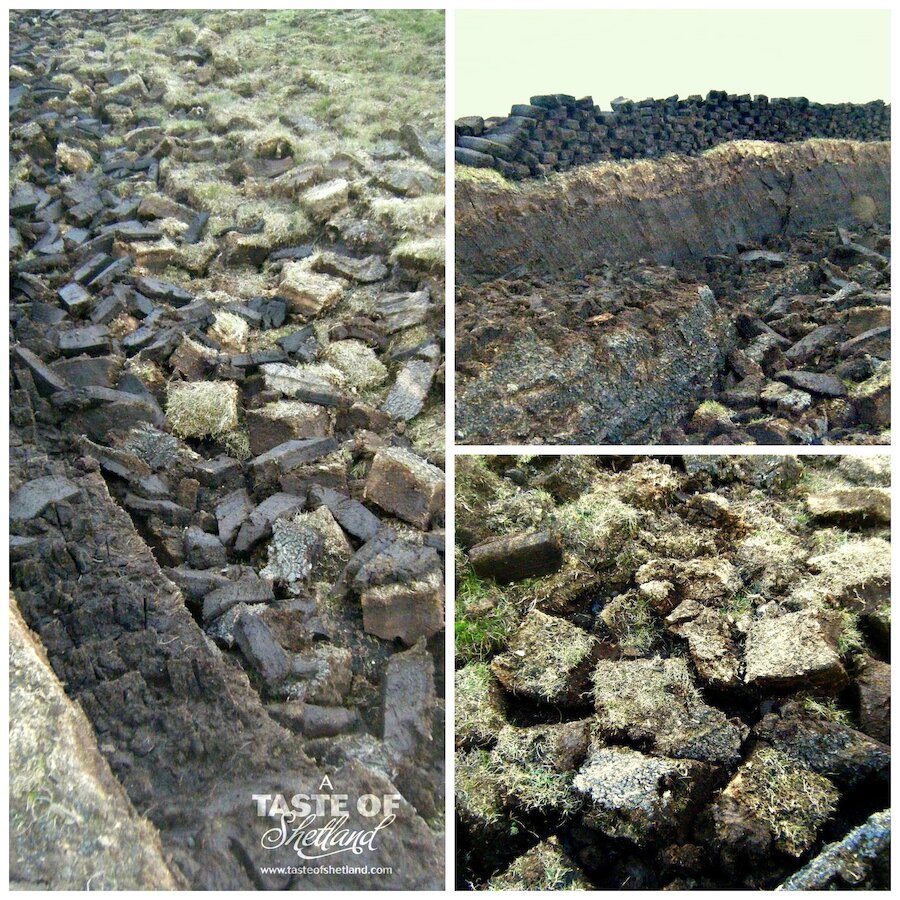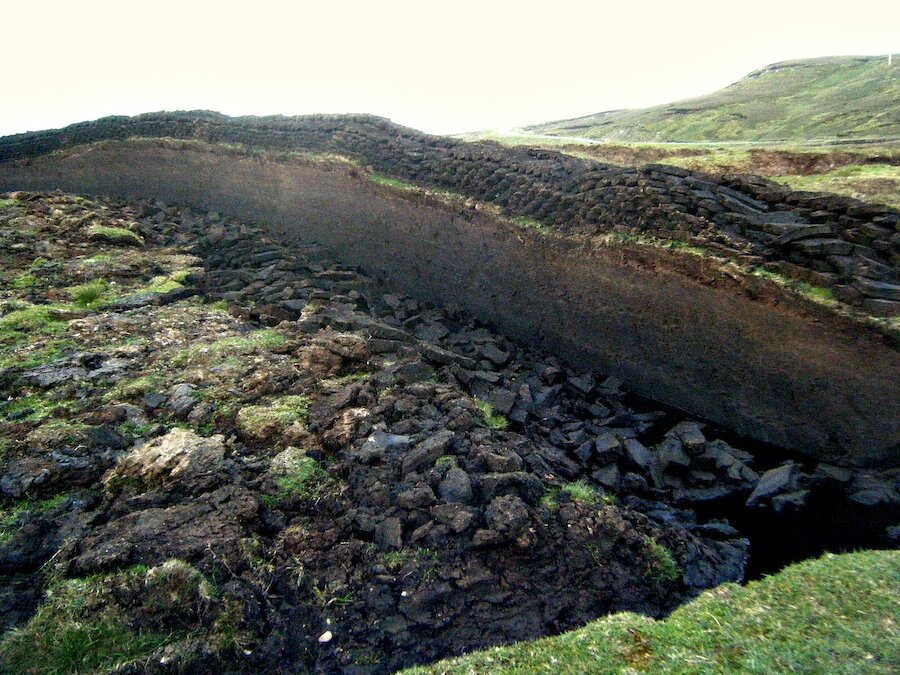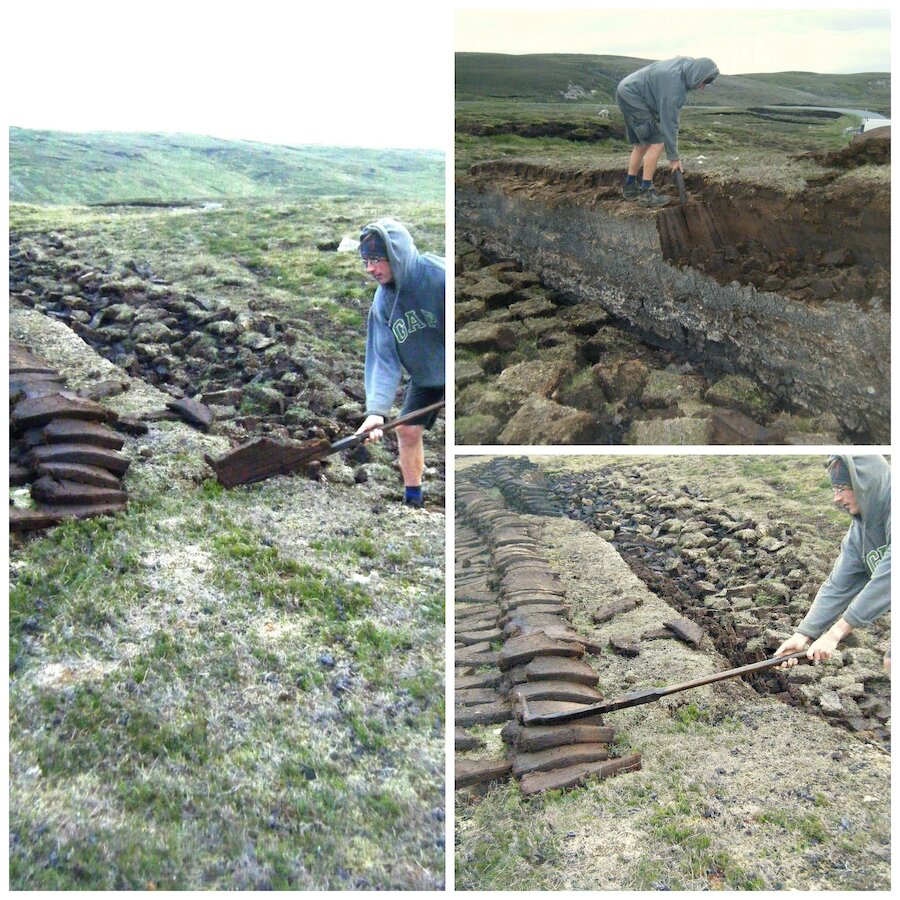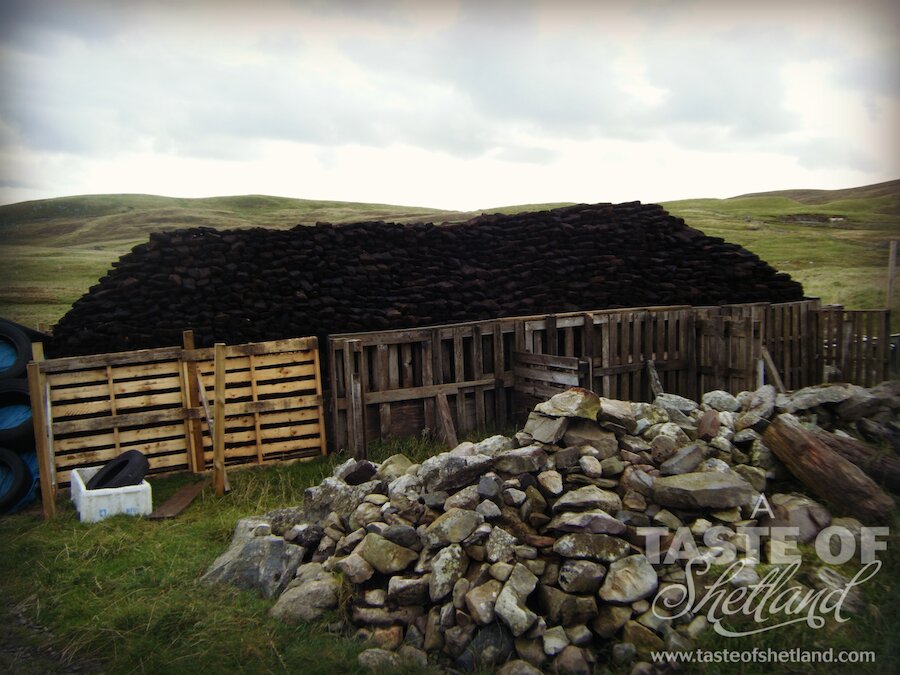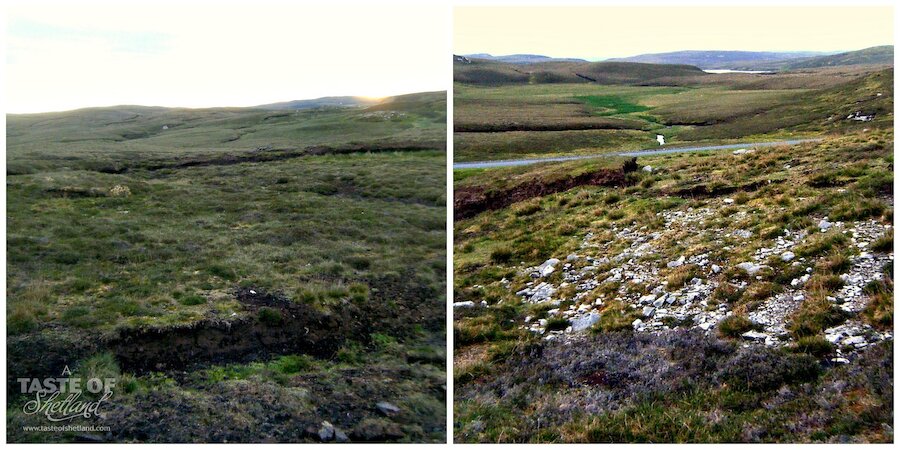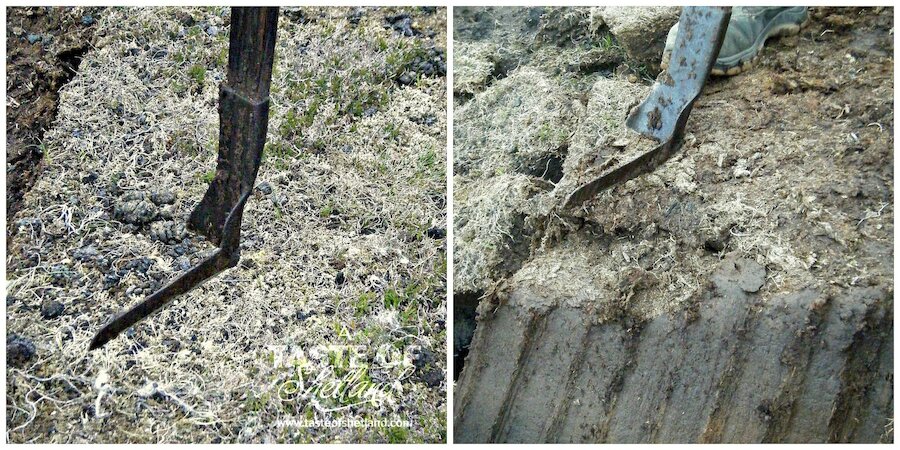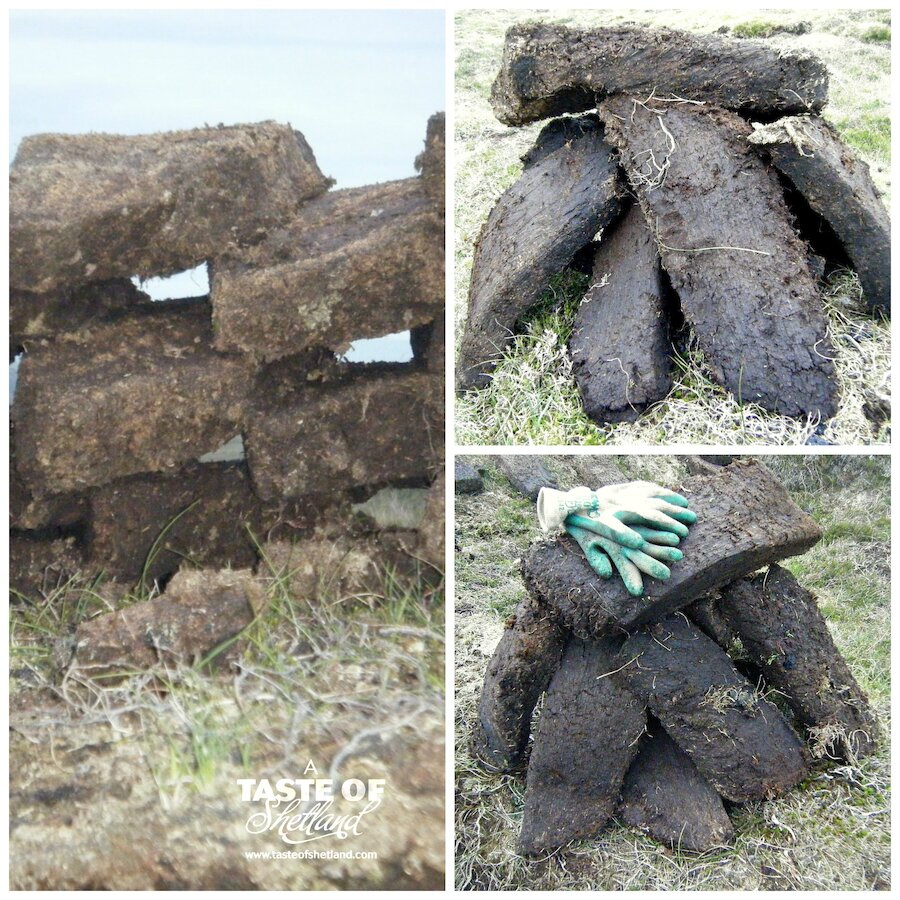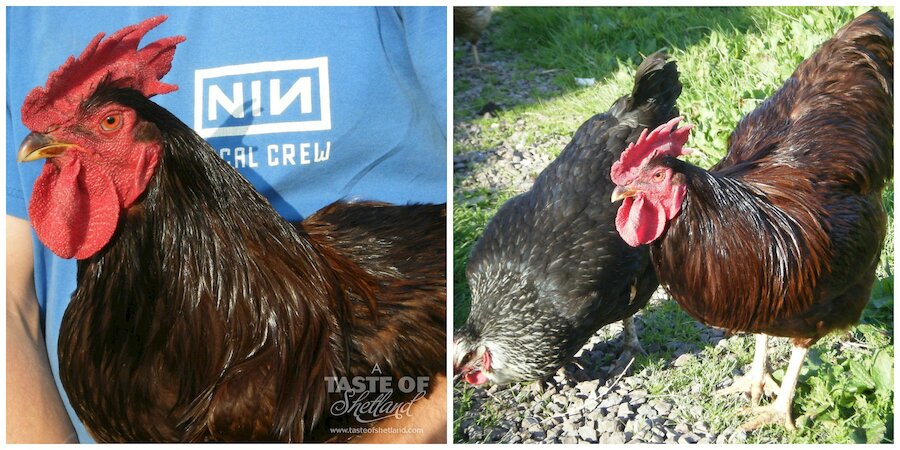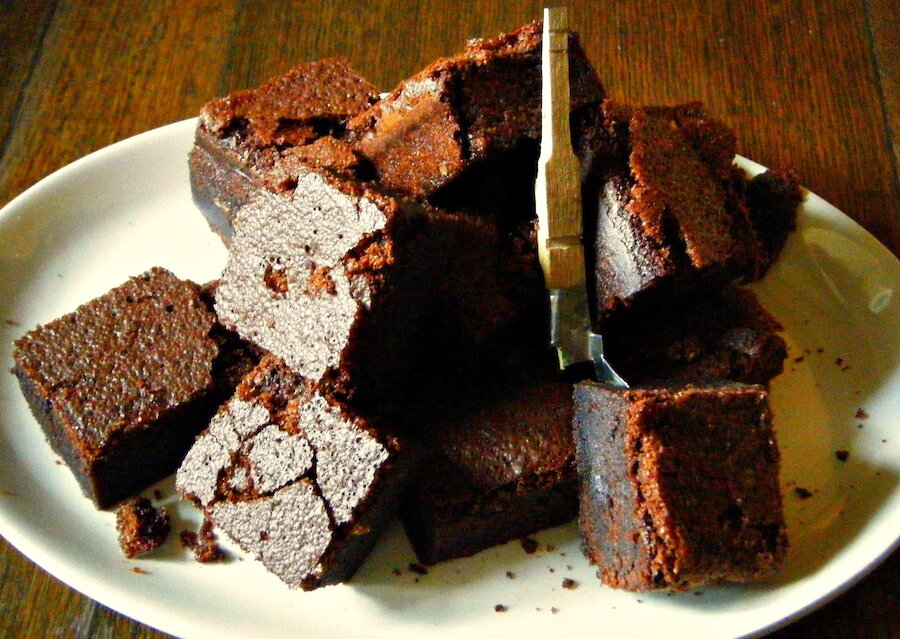We're late! Again. We always intend to start our paet (peat) casting at the beginning of May while we're waiting for the sheep to lamb. These last two years we don't seem to have been able to make it to the hill until well into the month or even June. In Samuel Hibbert's book 'A Description of the Shetland Islands', published in 1822, he describes peat casting from an Englishman's perspective in some detail:
“It is in the time of Voir [Voar], or spring, when the seed has been sown, that the Shetlander generally repairs to his scathold for the purpose of cutting his peat”
We're still sowing seed and will be until August, so maybe we're not late after all, or perhaps we just have too much to get in the ground. Mr Hibbert goes on to describe 'flaying the moor', 'casting' and , how the Shetlander dried the peat and transported it home. The process being somewhat an art and the 'perfect method' a source of competition between crofters.
Well, there is no competition with our paet. We are just grateful to get it out of the hill in time to get it dry, and home into the stack, before the August rain starts. Our diks (dykes) are uneven and the gref (bottom of the bank) is full of fallen paets.
It took us three years to be able to build a dyke of paet which vaguely resembles a proper one. We needed the whole of the first year working with paet to understand why the process was done the way it was. The size and shape is important for good drying and burning. Too big and they are difficult to raise, take too long to dry and won't fit in the stove. Too small and you spend more time lifting, carrying, turning and stacking.
It is a job and a half. Payment in physical labour for our heating, cooking and hot water bill. A fine sight in January though, when it's cold and windy. Looking at the stack we know we can crank up the heating and not need to find extra pennies to pay for it.
We need to cast around 1000 bags worth of peat to fuel our hungry Rayburn for the year. Thankfully, for the last two seasons we've cast half as much again as we really need. So we are well ahead and don't need to panic about getting it all cast in May. What remains in our stack at the moment would see us through until February. We are aiming to get a year ahead so we have reserves in case we have a problem one year and can't cast.
Having weighed an average sized dry paet, counted how many we get to a bag and multiplied that by the number of bags, we estimate we take home about 12 tonne of dried peat. It loses about 2/3rds of its weight in water loss, so we cast nearly 40 tonnes out of the ground each year.
Thinking about it in those terms we can't ignore the impact on the environment our peat casting has. Globally, peat makes up one third to one half of the world's carbon stores. Disturbing it is a major cause of CO2 emissions. Again, like our meat production and consumption it seems contrary to our efforts to reduce our impact on the planet.
At the moment we have little choice. We do not yet have the funds to replace our heating systems with renewables. We believe that using electricity, or oil, to fuel our home will create more CO2 emissions than we do already. Generating it by burning coal or extracting it from oil field, refining it and shipping it to us, all adding up to a bigger carbon footprint than we can ever create casting and burning peat from the hill. Having a multi-fuel Rayburn means we can burn waste wood too, using up some of the disposable pallets that collect everywhere. Ultimately the ess (ash) from burning goes back into the ground. We use it for all sorts. It contains essential nutrients for the plants and helps reduce the acidity of our soil. Hopefully micro-hydro generation using the movement of the water in the burn is on its way, but it won't be this year.
We are careful to respect the land. Replacing the faels (fells) the right way up after they have been flaed (flayed). So they continue to grow, starting the deposition of organic matter all over again and don't leave the hill open to erosion.
We love the fact that casting peat is traditional crofting activity and that it reduces the burden on our limited finances. Great exercise too and of course, you get to be outside. For the most part the weather has to be good to work with peat, although in bad years casting has been known to be done in the rain.
I don't hold with the traditional view that casting is man's work and the women do the rest. I like casting best, hate raising. Mainly because Alan's paets are big, and while still wet, very, very heavy. You have to carry them over uneven ground and stack them in a sort of 'tipee' so they dry to the best advantage. It is back-breaking work.
Turning, bagging and getting them home is easier and we usually have an army of helpers. Either whichever WWOOFers are about or the Moving On job crew, out and about, learning rural skills. Last August while we were bagging the last of the paets at the hill, Alan went off to pick up our Rhode Island Red cockerel. As a result of their hard labour and him being a lovely rich brown/red colour, the team of WWOOFers helping at the time named him Peat or Paet or Pete. Whichever way you'd like to spell it.
Working at the hill influences many things, including bringing a sense of peace and calm. Even when you head out to do a couple of hours casting after long hours of sowing, planting, hoeing and weeding. Surprisingly it is never a chore and always, after our first flaying of the banks and casting of the first paet of the year, I have to go home and cook chocolate brownies.
The texture, colour and stickiness reminding me of that yummy baking. When the paet is eventually burning in the stove, each one has gone through no less than nine actions before it fuels our home. A labour of love and far more meaningful than flicking a switch. Sitting in our kitchen, eating chocolate 'paet' brownies, you can feel how the Rayburn appreciates it—or is that just us?
Paet, Peat or Pete Brownies
Course: Main
Servings: 16 squares
Prep Time: 10 minutes
Cook Time: 30-35 minutes
Ingredients:
- Chocolate - 75 grams (unsweetened)
- Butter - 75 grams
- Free range eggs - 3 large
- Milk - 1 1/2 tbsp
- Caster sugar - 250 grams
- Plain flour - 75 grams
- Salt - 1/4 tsp
- Baking powder - 1/2 tsp
- Vanilla extract - 1/2 tsp
Instructions:
- Melt chocolate and butter in a bowl over a pan of warm water.
- Sift flour, salt and baking powder together.
- Beat eggs and milk together in a large mixing bowl. Add sugar and vanilla extract, beat a little more. Stir in chocolate and butter mixture.
- Add sifted ingredients and beat until well blended.
- Pour mixture into a prepared 20cm x 20cm deep baking tin and bake at 160C, 325F, gas mark 3 (or whatever your temperamental peat fueled oven is at) until the mix is well risen and springy in texture.
- Cut into squares when cold.
